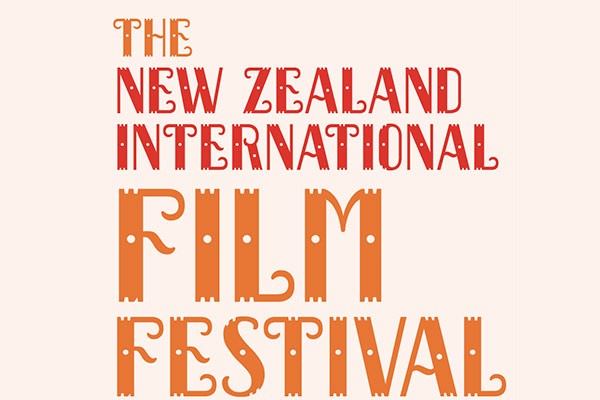The cinematic experience is lost when you stream a film online; for director of the New Zealand International Film Festival (NZIFF), Bill Gosden, the mere act of going to the movies plays a social role in our lives that can’t be replaced.
Dunedin’s Regent Theatre and Rialto Cinemas will be showcasing almost 100 films as part of this year’s NZIFF. Opening on 30 July, the festival began with the Italian comedy-drama, The Mafia Kills Only in the Summer, and closes with two very different films — Tale of Tales and Red Army.
Films are about looking through another person’s eyes, entering their life and seeing how their world operates. The NZIFF offers multiple opinions, visions and lives for us to enter — ones we wouldn’t normally see with blockbuster films. From documentaries like Amy, which pays tribute to Amy Winehouse, to the futuristic sci-fi drama, Ex Machina, there are films for all of our feelings and interests — no matter how “out there” they may be.
The Wolfpack, 4/5 | Directed by Crystal Moselle | Showing on 31 July, 1 August and 4 August 2015
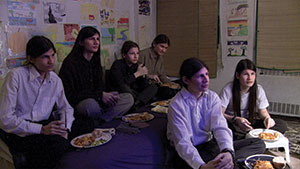
Director, Crystal Moselle, has been to three continents in a span of a few days. She’s now in New Zealand promoting her documentary, The Wolfpack. Her film was the winner of the 2015 Sundance Film Festival’s US Grand Jury Prize; in Auckland, where the NZIFF is now in full swing, extra screenings have been added due to the traction it has been gaining.
The film focuses on the lives of the Angulo brothers — Mukunda, Narayana, Govinda, Bhagavan, Krisna (who now goes by Glen), and Jagadesh (now Eddie). The children are raised by a hopeful mother, Susanne, and paranoid father, Oscar — a man who was afraid that the outside world would “contaminate” his children. The brothers and their sister were kept in a four-bedroom New York apartment for most of their lives. Although they were allowed outside on monitored family trips once or twice a year, it was through movies that the siblings truly learnt about the outside world. Having seen thousands of films, the boys began to re-enact scenes from Reservoir Dogs and The Dark Knight, creating props out of cereal boxes and spending hours writing out the script by hand.
When they began to reach their formative teenage years, the weight of their father’s rules could finally be felt and, in 2010, Mukunda left the house as an act of rebellion. Despite ending up in hospital due to his strange behaviour (he was walking around New York with a Michael Myers mask on — reason enough), his tenacity encouraged all of the brothers to venture outside. Using a cinéma-vérité style, Moselle organically captures the family’s transformation as their desires begin to exceed the walls of their sixteenth-floor apartment and lead them to explore the outside world. This is the life we all take for granted, but it’s one that the brothers are only just beginning to know.
Moselle’s objective approach to filming her subjects allows the audience to bond with the Angulo family. Despite their lack of social interaction, the boys are likable and quirky, and we’re empathetic to their frustration when they discover life isn’t quite like it is in the movies. The boys almost seem like Holden Caulfield types as they become exposed to the more subtle and negative aspects of the outside world — something that Oscar has spent his whole life trying to keep his family away from.
It is through the director’s crafted sense of objectivity that the audience can understand Oscar; while he appears somewhat antagonistic, he is not necessarily positioned as the antagonist. Giving him the opportunity to explain why he kept his family locked in for all those years doesn’t mean the audience agrees with his opinions, but it does give us insight into how he thinks. The Wolfpack becomes a film that is not about family dysfunctionality — something it could have easily fallen into — but about one family’s plight to overcome the restraints of their father’s possessive rules.
With an interesting cinematic style, The Wolfpack not only showcases that social role Gosden spoke of, it also exudes a spirit — one that only grows stronger as the boys become more confident to step outside.
Interview: Crystal Moselle, Director of The Wolfpack
Crystal Moselle’s award-winning documentary, The Wolfpack, will be coming to Dunedin soon as part of the NZIFF. Mandy Te spoke to Moselle about the documentary and her relationship with the Angulo brothers.
Critic: Meeting the Angulo brothers the way you did, what exactly drew you to them? Your meeting seems kind of serendipitous.
Yeah, it was serendipitous. Originally, what drew me to them was the way they looked, but it was also a feeling that I can’t describe. They were unique. They had long hair and they were all dressed similar, but what was really interesting to me was their openness. They were so open about life and I had never met anybody like them before. Especially in New York, where everybody is so jaded and too cool — they were super excited about life and open to things. They just had something about them that was very special and I had to figure out what it was.
Critic: The filming process took about four and half years — what was an average day of filming like?
There wasn’t really an average day. It depends if they were doing something or if I was just coming over to their house to talk — sometimes I would get into these long conversations with them, learning about their point of view on life, and that kind of paved the way for me to step back and capture them.
Critic: With 500 hours of footage, how did you know which footage to pick? Did you have a specific vision or message in mind that you wanted to get across?
The way we did it was very organic. In the footage, you’re looking for emotion and you’re looking for stuff that moves you on screen. You can come up with an idea on paper of what you think a story should be but it’s really how you see it on screen.
We would create these sequences and we would create these moments that didn’t necessarily go together. We made this massive puzzle that we would constantly move around, and then we would just start stripping stuff away. Of course, there’s so many scenes and moments that you want to keep but you can’t. It eventually becomes the film that’s an hour and a half long, which is crazy because I filmed for four and a half years. But I think it’s right this way.
Critic: It seems that the film showcases a transformation — not only of the brothers but with their mum too.
Out of all of them, their mom had the biggest transformation. The boys were going through their rebellion stage in life and they’re high-school aged, but their mom is an adult who had more rules than her kids. She is then able to be released as well, and it’s all inspired by her children. Her children really helped her break free.
Critic: As someone who is their friend and one of the first people they opened up to about their lives — what was that like for you to see both in person and re-live it in film?
It was pretty amazing. The whole process felt natural because it was happening right in front of my face. When I look back at it, it was very emotional and it wasn’t easy living through it with them. It made me sad at times and I definitely questioned whether I should do the film quite a few times.
Critic: Did you find it hard to be objective because it was personal for you?
Yeah, I got pretty close with them during the process of the film and there I am having to tell this story. It was hard to have to present my version of their lives. They all saw the film, besides Govinda and Narayana — even their father has seen it. They all felt like it was an honest portrayal of their lives, so it was fine. It ended up being okay.
Critic: In your interview with VICE, you said that one of the earlier questions that the brothers asked you was what was your favourite film — so what are your favourite movies?
I always love movies that I probably wouldn’t make myself. I really love Sexy Beast and Fish Tank. I like Harmony Korine’s movies. I love Hearts of Darkness, Crumb, Bombay Beach and Holy Motors — I love that movie. It’s a mazing. I also love Grey Gardens — that’s obvious!
Belief: The Possession of Janet Moses, 5/5 | Directed by David Stubbs | Reviewd by Alex Campbell-Hunt | Showing on 16 August 2015
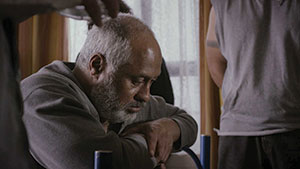
Belief: The Possession of Janet Moses is a film that will emotionally put you through the wringer, and then some. It was not easy to watch, and a few minutes in, I was already feeling queasy. By that stage, however, I was unable to turn away.
In 2007, New Zealand was shocked by the tragic death of Janet Moses, a woman who drowned in the Wellington suburb of Wainuiomata. Her family believed that she had been possessed by a malevolent entity and, undergoing a cleansing ritual known as mākutu lifting that took place in the family home, Moses was accidentally drowned. This documentary explores the events surrounding her death — the loss of her grandmother, relationship problems with her partner and Moses’ own mental condition.
The documentary features reenactments of the ritual and the days leading up to it, which are framed by interviews with lawyers, police officers, family friends and other people who worked through the aftermath. The interviews are absorbing enough to watch on their own. Each interviewee discusses the events in a calm and even-keeled way, providing an anchor that makes the film possible to watch, despite its harrowing content. There is also some impeccable cinematography, and the establishing shots have a haunting beauty to them — one that becomes etched in your mind.
The documentary raises issues concerning spirituality and science — when should one take precedence over the other, and where should the line be drawn? In the case of Belief, cultural differences are also involved. The film treats this sensitive topic in an objective and non-judgmental way. However, our perceptions of the event transform slightly as we learn the full details of what happened. At one point, the extent to which these events were based on established spiritual beliefs and practices is called into question — it is suggested that group hysteria may have played a major role in Janet’s death.
Although Belief doesn’t present any easy answers, all points of view are given a voice. Well-made and engrossing to watch, this is a powerful documentary that sensitively communicates its story.
Deathgasm, 3/5 | Directed by Jason Lei Howden | Reviewd by Anonymous Bird | Showing on 7 August 2015
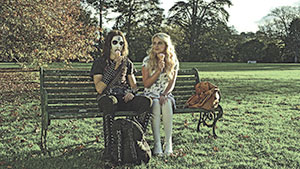
Deathgasm excels as a consciously typical metal comedy-horror film. Written and directed by New Zealander, Jason Lei Howden, the film doesn’t waste time telling the audience what it’s all about — a teenager who may have brought about the end of the world.
When his mother is institutionalised, metalhead Brodie (Milo Cawthorne) is sent to live with his religious relatives — Uncle Albert (Colin Moy), Aunt Mary (Jodie Rimmer) and psychopathic jock cousin, David (Nick Hoskins-Smith). At his new school, the only friends he makes are Dungeons & Dragons enthusiasts, Giles (Daniel Cresswell) and Dion (Sam Berkley). Feeling particularly unsatisfied with how his life is going, Brodie ends up befriending Zakk (James Blake), another metalhead, and starting a band with him.
The pair break into a house and discover that one of their idols, the reclusive metal legend Rikki Daggers, lives there. Daggers gives them a record, telling them to hide it and warning them that a satanic cult is after it. The boys bail and Daggers is killed by a member of the cult for refusing to tell them where the record is.
Zakk and Brodie are quickly disappointed when they discover that Daggers has given them a Rick Astley record, but they do find some strange Latin sheet music. Unconvinced of the music’s magical power, they choose to incorporate the music into one of their songs and a demon is summoned. When hell on Earth breaks loose, the pair, alongside their bandmates and Brodie’s crush, Medina (Kimberley Crossman) — an axe-wielding blonde — attempt to defeat the demon.
The film often relies on stereotypes. Seeing the same high school roles recycled — the socially inept nerds, the hot blonde, the jock bully and the misfit metalheads — feels overdone. While Deathgasm does go some way in challenging these roles, the characters remain fairly typical and bring predictability to the plot. However, Milo Cawthorne and James Blake work well together, giving the audience a friendship that is both entertaining and endearing.
With a fun plot, Deathgasm is a film that doesn’t try to be anything other than what it is — a light-hearted, comedy-horror that achieves an easy-to-watch simplicity.
The Silences, 4/5 | Directed by Margot Nash | Reviewd by Shaun Swain | Showing 13 August 2015
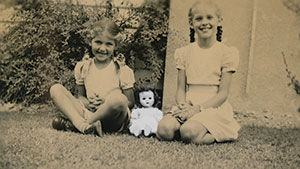
“I always knew my family had secrets,” says Margot Nash — a statement that extends beyonds her family and towards our own in several ways. Using her own family as a case study, Nash asks several important, unanswered questions in her personal essay compilation documentary, The Silences.
The Silences showcases an abundance of old photos of the Nash family from New Zealand and Australian archives, alongside visually stunning key scenes from her previous works. Effortlessly woven together by her narration, Nash reveals the destructive nature of her family relationships, and the history underpinning it all. The film is accompanied by original musical compositions as well as piano covers by Elizabeth Drake, which help to establish an atmosphere of reflection upon Nash’s mother, Ethel, her sister, Diana, and her mentally ill father.
Watching the film is similar to watching a drama mystery as Nash slowly reveals everything in the fashion of a self-contained narrative, with the exception of the open-endedness that accompanies her subjectivity and speculation. It is difficult to take everything that is said as fact, but in some ways this sense of discretion adds to the documentary’s intrigue. The Silences becomes less a matter of understanding what exactly happened in her family and more about how we, as a society, refuse to address or talk about the issues we face in our own lives, whether it be mental illness or any other “elephant in the room”.
The combination of photography, music, narration and brief motion video is an incredibly simple yet effective response to the financially independent nature of the film. Even though The Silences is the product of a fictitious project being reduced to a personal slideshow, the realistic aspects of the story add to the emotional weight and impact Nash has on the audience.
With a melancholic, yet cathartic revelation of information, Nash draws audiences in with The Silences, chronicling her late family’s history and their stoic approaches to mental health.
The Price of Peace, 5/5 | Directed by Kim Webby | Reviewd by Andrew Kwiatkowski | Showing 9 August 2015

Oppressed (adjective): subject to harsh and authoritarian treatment.
This New Zealand documentary follows Māori political activist, Tame Iti, a man labelled as a “terrorist” by the government and the media, after the 2007 Urewera police raids. Perhaps, like me — a middle-class and very white person — you didn’t really understand what that kerfuffle was all about, which is why it is so incredibly, vitally important that you see The Price of Peace. With police footage, news archives and interviews with several significant people, Webby offers a documentary that is well-informed, carefully constructed and thoughtfully made.
At the time, the mainstream narrative promulgated was that Tame Iti and three others were running paramilitary training camps, complete with guns and explosives, and plotting some sort of violent separatist uprising against the New Zealand government and population. The police and the government, supposedly, are the heroes that saved us from the terrorists.
This premise could not be more wrong. The first-hand accounts from the men, women and children of the Ngāi Tūhoe tribe who were interrogated by masked men in black wielding assault rifles in the raids, are very raw and painful, and show us exactly which party needs to fear being shot.
Stories shape our beliefs, our behaviour and our world. As the saying goes, “one man’s terrorist is another man’s freedom fighter”. So, who do you believe is the real hero of this story? Is it the police and the justice system? Or is it, rather, Tame Iti, a man who endures his prison sentence and emerges without bitterness? In The Price of Peace, we see a man who lives his life from his heart and soul. After watching this beautifully crafted documentary, one cannot reconcile this figure with the “terrorist” caricature created by our government and media.
There is a heart-wrenching ending to the film, in which some restorative (but not retributive) justice is offered by the Police Commissioner, Mike Bush, who takes responsibility for the pain caused to the families involved. The Urewera four are not violent terrorists. They are human beings who should be free to feel secure and understood. Let’s not perpetuate a narrative of this group being anything more or less.


